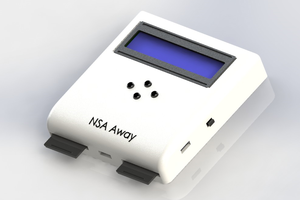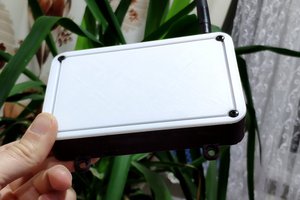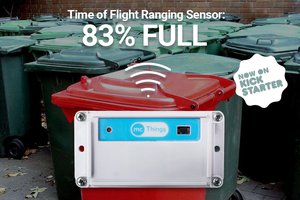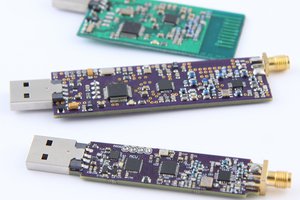Well... It is not a secret that Geiger counters are one of my favorite subjects where it comes to creating electronic projects. Everything began nearly decade ago, when I built original EtherGeiger. Since then project had been revised number of times, because I was using it as an easy reference point while learning new hardware or programming skills. Few years ago I created new version based on more powerful PIC32 microcontroller, which allowed me to add WebUI interface and local data storage based on USB flash drive. There was also a retro version built exclusively with vintage chips.
All of the previous versions of this device had one significant drawback - data could be either accessed via some wired interface (Ethernet or RS485) or read manually from display or USB flash drive. It reduced usability of the device, making it also hard to deploy in some places. The next step was obvious - making it wireless.
To be honest this idea came to my mind pretty early, just after ESP8266 modules hit the market. I began designing early versions of PCB few years ago, but only recently I was able to finish it and write a code.
Similar to previous versions device is based on vintage Soviet Geiger tube (STS-5) which was designed to measure low levels of ionizing radiation, close to the natural background. High voltage (around 400V) required by the tube is being produced by typical flyback converter, made with common MC34063A chip.
Power supply and analog part is almost identical to the wired versions of the device. The main difference lays in digital part. Instead of microcontroller I used popular ESP8266 module (7S version with external antenna to be precise). I know ESP32 is more popular now, but older version had everything I needed. Because of the lack of integrated hardware counter, I had to count pulses from the tube with interrupt handled software counter, but this solution turned out to be just as useful.
Due to limitations of the hardware platform (lack of USB interface or insufficient number of pins to connect SD card) this version do not have local storage. Data is being periodically sent to MQTT broker. There is also an option to get latest measurements with from HTTP server.
I wrote firmware in C using RTOS SDK provided by Espressif. Simple WebUI had been written using plain old JavaScript, HTML and CSS combo. I created some elements of this webpage using examples provided with great libesphttpd library.
WiFiGeiger is equipped with I2C RTC chip, which allows it to properly timestamp measurements, even if at the moment there is no Internet connection allowing access to the NTP server.
As in case of the previous versions, I designed this device as a joke. I never intended to have practical use. But as it often happens life verified that assumption. I live in Poland, less than 300 km from Ukrainian border. When Ukraine was invaded by Russia in February and heavy fights were fought on the site of former nuclear power plant in Chernobyl, very disturbing rumors and fake news about increased level of nuclear radiation began to circulate among my friends and family members. Having such a device helped me to calm them down.
Contrary to the previous versions of my network enabled Geiger counters, my plan is to install it outdoor, inside watertight enclosure. I will also add bme280 sensor to monitor temperature, humidity and air pressure.
 Marek Więcek
Marek Więcek
 Scott Hasse
Scott Hasse
 V.G.C.
V.G.C.
 mcThings
mcThings